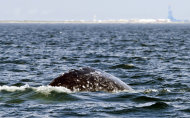Australian girl goes to court to stop marriage

This file illustrration photo shows people queueing at the ticketing counter inside departure terminal at Sydney airport. A 16-year-old girl has been placed on an airport watchlist in Australia after going to court to prevent her parents sending her to Lebanon for a forced marriage.(AFP/File/Greg Wood)
By AFP
SYDNEY (AFP) - A 16-year-old girl has been placed on an airport watchlist in Australia after going to court to prevent her parents sending her to Lebanon for a forced marriage.
The Federal Magistrates' Court ruled that the parents of the teenager, who cannot be named, could not remove or attempt to remove their daughter from the country to marry the young man she has met only once.
Magistrate Joe Harman also ordered that the parents not assault, molest, harass, threaten or otherwise intimidate the girl or take her out of school.
In his judgement, delivered in April but revealed by Australian press on Friday, Harman said the girl's application to prevent her parents from sending her away for the marriage was one that was becoming increasingly common.
"The young person's evidence makes very clear that she has expressed to her parents that she does not want to go to Lebanon and does not want to marry the person proposed," he said.
"She has indicated also in her evidence that she is fearful for her personal safety, that she has concerns as to what will occur in relation to her mother's reaction once she becomes aware of these proceedings."
He said the girl might be suggested to have betrayed the authority of her parents by challenging the Lebanese Islamic culture in which she had been raised and this only made him more convinced of her argument.
"What has occurred is, in fact, an act of great bravery by this young woman in taking the steps this young person has taken in seeking assistance through the Legal Aid Commission," he said.
Harman found there was a psychological risk posed to the girl if he did not stop her marriage to a man who was essentially "a stranger".
He said if she was forced to go through with the union without her consent, it would render the marriage void under Australian law.
The Federal Magistrates' Court ruled that the parents of the teenager, who cannot be named, could not remove or attempt to remove their daughter from the country to marry the young man she has met only once.
Magistrate Joe Harman also ordered that the parents not assault, molest, harass, threaten or otherwise intimidate the girl or take her out of school.
In his judgement, delivered in April but revealed by Australian press on Friday, Harman said the girl's application to prevent her parents from sending her away for the marriage was one that was becoming increasingly common.
"The young person's evidence makes very clear that she has expressed to her parents that she does not want to go to Lebanon and does not want to marry the person proposed," he said.
"She has indicated also in her evidence that she is fearful for her personal safety, that she has concerns as to what will occur in relation to her mother's reaction once she becomes aware of these proceedings."
He said the girl might be suggested to have betrayed the authority of her parents by challenging the Lebanese Islamic culture in which she had been raised and this only made him more convinced of her argument.
"What has occurred is, in fact, an act of great bravery by this young woman in taking the steps this young person has taken in seeking assistance through the Legal Aid Commission," he said.
Harman found there was a psychological risk posed to the girl if he did not stop her marriage to a man who was essentially "a stranger".
He said if she was forced to go through with the union without her consent, it would render the marriage void under Australian law.










